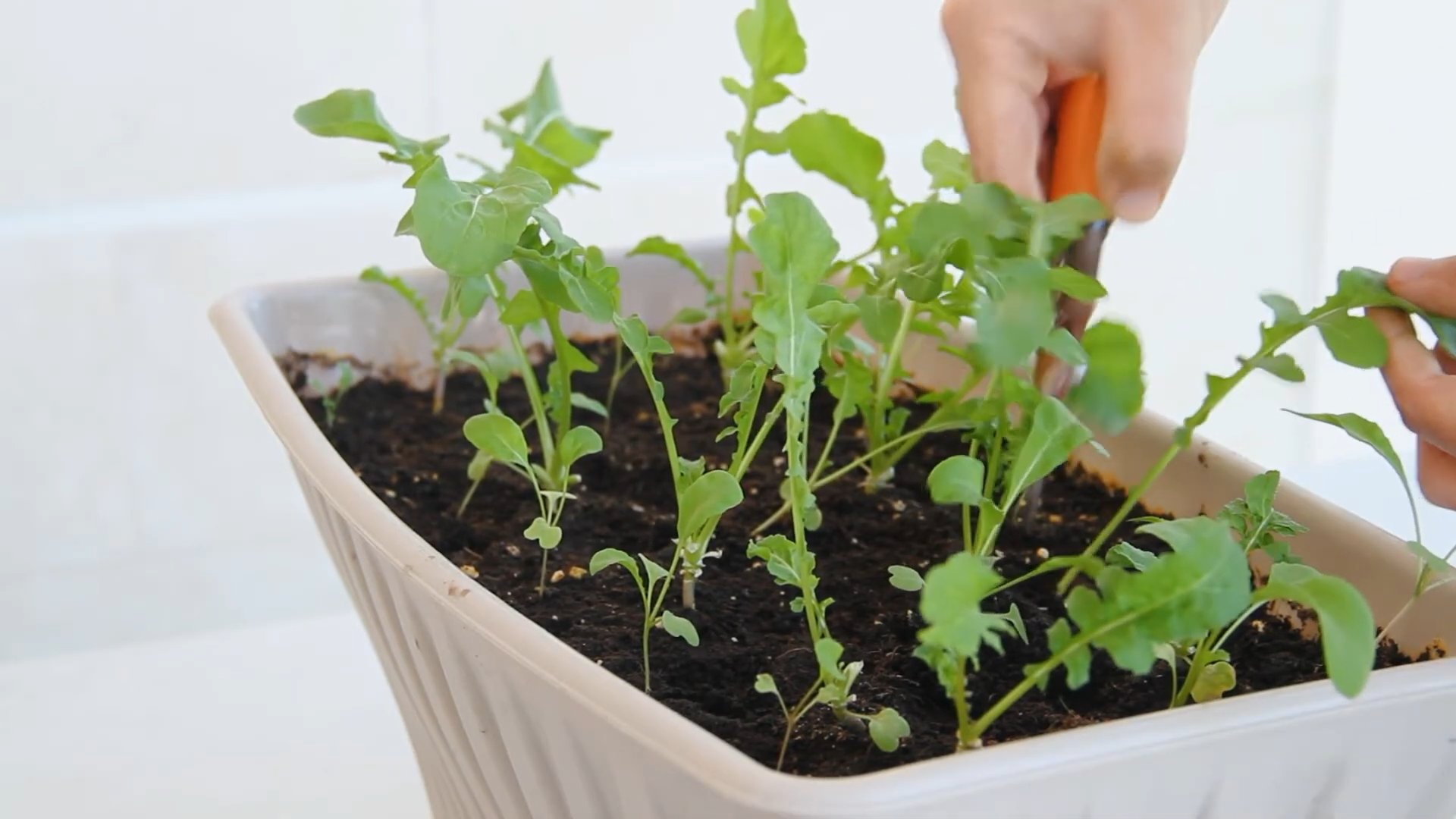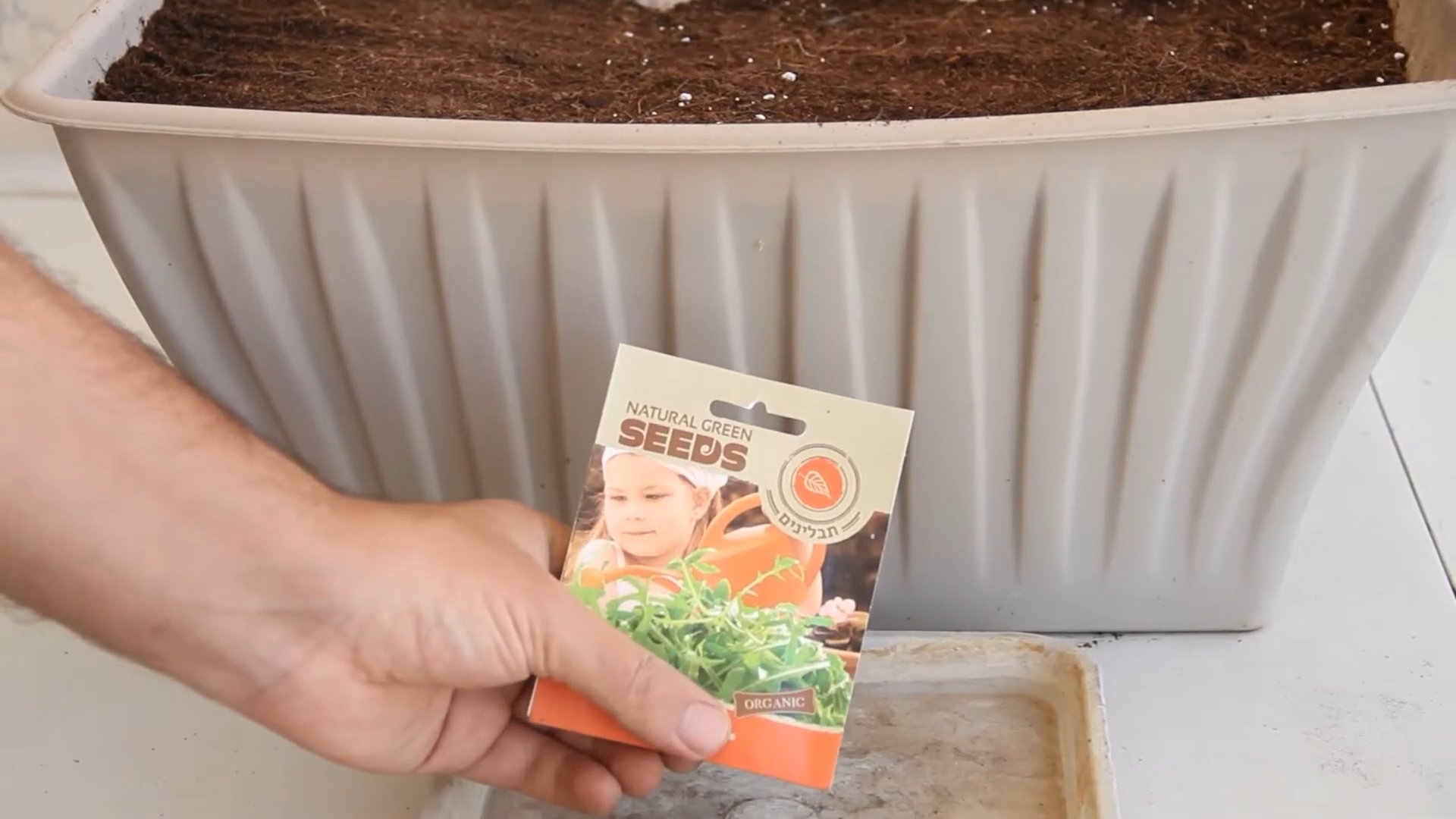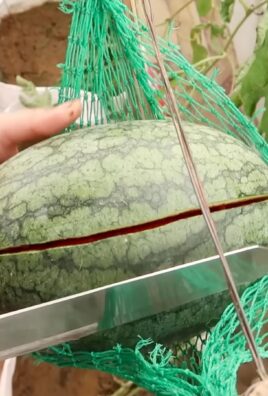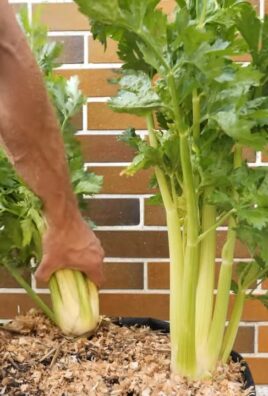Grow Arugula at Home? Absolutely! Imagine stepping outside your door and snipping fresh, peppery arugula leaves for your salad, pizza, or pesto. No more trips to the grocery store or settling for wilted greens. This isn’t just a dream; it’s a delicious reality you can easily achieve with a few simple tricks and a little DIY spirit.
Arugula, also known as rocket, has a rich history dating back to Roman times, where it was prized for its flavor and medicinal properties. Today, this leafy green is a culinary staple worldwide, adding a zesty kick to countless dishes. But why rely on store-bought arugula when you can cultivate your own, bursting with flavor and freshness?
I know what you’re thinking: “I don’t have a green thumb!” But trust me, growing arugula at home is surprisingly easy, even if you’re a complete beginner. This DIY guide will walk you through everything you need to know, from choosing the right container to harvesting your first batch of peppery leaves. We’ll explore simple hacks and tricks that will ensure a bountiful harvest, even in small spaces. So, ditch the expensive store-bought greens and let’s embark on this exciting journey to grow arugula at home and enjoy the freshest, most flavorful arugula imaginable!

Grow Your Own Arugula: A Spicy Salad Adventure!
Hey there, fellow garden enthusiasts! I’m so excited to share my foolproof method for growing arugula right in your own home. Forget those sad, wilted bags from the grocery store – fresh, peppery arugula is just a few steps away, and trust me, it’s incredibly rewarding. This guide will walk you through everything you need to know, from choosing the right container to harvesting your delicious greens. Let’s get started!
Choosing Your Arugula-Growing Setup
Before we dive into the nitty-gritty, let’s talk about where you’ll be growing your arugula. You have a few options, and each has its own set of pros and cons.
* Containers: This is my personal favorite, especially if you’re short on space or want to keep your arugula indoors. You can use anything from a small pot on a windowsill to a larger container on a balcony or patio.
* Raised Beds: If you have a bit more space outdoors, a raised bed is a fantastic option. It provides good drainage and makes it easier to control the soil quality.
* In-Ground Garden: Of course, you can always plant your arugula directly in the ground if you have a garden plot. Just make sure the soil is well-draining and amended with compost.
For this guide, I’ll focus on growing arugula in containers, as it’s the most accessible option for most people.
What You’ll Need: The Arugula Arsenal
Okay, gather your supplies! Here’s what you’ll need to embark on your arugula-growing journey:
* Arugula Seeds: You can find these at most garden centers or online. Look for varieties like ‘Astro’ or ‘Rocket’ – they’re known for their flavor and ease of growth.
* Container: Choose a container that’s at least 6 inches deep and has drainage holes. The size will depend on how much arugula you want to grow. A 12-inch pot is a good starting point.
* Potting Mix: Use a high-quality potting mix that’s well-draining. Avoid using garden soil, as it can become compacted in containers.
* Watering Can or Hose: For gentle watering.
* Optional: Liquid Fertilizer: A balanced liquid fertilizer can help boost growth, but it’s not essential.
* Sunny Spot: Arugula needs at least 6 hours of sunlight per day. A south-facing windowsill or a sunny balcony is ideal.
* Small Hand Trowel: For planting seeds.
Planting Your Arugula Seeds: From Tiny Seeds to Tasty Greens
Now for the fun part – planting! Follow these steps to get your arugula seeds off to a great start:
1. Prepare Your Container: Fill your container with potting mix, leaving about an inch of space at the top. Gently pat down the soil to create a level surface.
2. Sow the Seeds: Sprinkle the arugula seeds evenly over the surface of the soil. You don’t need to bury them too deep – just a light covering of soil is enough. Aim for about ¼ inch depth.
3. Water Gently: Use a watering can or hose with a gentle spray nozzle to water the soil thoroughly. Be careful not to wash away the seeds.
4. Find a Sunny Spot: Place your container in a sunny location where it will receive at least 6 hours of sunlight per day.
5. Keep the Soil Moist: Arugula needs consistent moisture to germinate and grow. Check the soil daily and water whenever the top inch feels dry to the touch.
Caring for Your Arugula: Nurturing Your Greens
Once your arugula seeds have sprouted (usually within a week), it’s time to focus on providing the right care to help them thrive.
1. Thin Seedlings (If Necessary): If your seedlings are growing too close together, thin them out to give them more space to grow. Aim for about 2-3 inches between plants. You can use small scissors to snip off the extra seedlings at the base.
2. Water Regularly: Continue to water your arugula regularly, keeping the soil consistently moist but not waterlogged.
3. Fertilize (Optional): If you want to give your arugula a boost, you can fertilize it with a balanced liquid fertilizer every 2-3 weeks. Follow the instructions on the fertilizer label.
4. Watch for Pests: Arugula is generally pest-resistant, but keep an eye out for common garden pests like aphids or flea beetles. If you spot any pests, you can try spraying them with insecticidal soap or neem oil.
5. Provide Adequate Sunlight: Ensure your arugula receives at least 6 hours of sunlight daily. If you’re growing it indoors and don’t have enough natural light, you may need to supplement with a grow light.
Harvesting Your Arugula: The Sweet Reward
The best part of growing your own arugula is, of course, harvesting and enjoying your fresh greens!
1. When to Harvest: You can start harvesting arugula leaves when they are about 2-3 inches long. This usually takes about 3-4 weeks after planting.
2. How to Harvest: Use scissors or your fingers to snip off the outer leaves, leaving the inner leaves to continue growing. This is known as a “cut-and-come-again” harvesting method, which allows you to harvest multiple times from the same plant.
3. Harvest Regularly: Harvesting regularly will encourage your arugula plants to produce more leaves.
4. Wash and Enjoy: Wash your harvested arugula leaves thoroughly before eating. They’re delicious in salads, sandwiches, pesto, or as a topping for pizza.
Troubleshooting: Common Arugula Growing Problems
Even with the best care, you might encounter a few challenges along the way. Here are some common problems and how to address them:
* Slow Germination: If your arugula seeds are taking longer than expected to germinate, make sure the soil is consistently moist and the temperature is warm enough (around 60-70°F).
* Leggy Seedlings: If your seedlings are tall and spindly, they’re likely not getting enough sunlight. Move them to a sunnier location or supplement with a grow light.
* Yellowing Leaves: Yellowing leaves can be a sign of overwatering, underwatering, or nutrient deficiency. Check the soil moisture and adjust your watering accordingly. You can also try fertilizing with a balanced liquid fertilizer.
* Pest Infestations: As mentioned earlier, keep an eye out for pests like aphids or flea beetles. Treat infestations with insecticidal soap or neem oil.
* Bolting: Bolting is when the plant starts to produce flowers and seeds, which can make the leaves taste bitter. This is often triggered by hot weather. To prevent bolting, try to grow your arugula in a cooler location or during the cooler months of the year. You can also try planting bolt-resistant varieties.
Extending Your Arugula Harvest: Keeping the Greens Coming
Want to enjoy fresh arugula for as long as possible? Here are a few tips for extending your harvest:
* Succession Planting: Sow new seeds every 2-3 weeks to ensure a continuous supply of arugula.
* Choose Bolt-Resistant Varieties: As mentioned earlier, bolt-resistant varieties are less likely to bolt in hot weather.
* Provide Shade: In hot weather, provide some shade for your arugula plants to help prevent bolting. You can use shade cloth or move the container to a shadier location.
* Water Deeply: Water deeply and less frequently to encourage deep root growth, which can help the plants withstand heat and drought.
* Harvest Regularly: Regular harvesting will encourage the plants to produce more leaves and delay bolting.
Arugula Varieties to Explore: Spice Up Your Salad
While ‘Astro’ and ‘Rocket’ are popular and reliable choices, don’t be afraid to experiment with different arugula varieties! Each offers a slightly different flavor profile and texture.
* Wild Arugula (Diplotaxis tenuifolia): This variety has a more intense, peppery flavor than common arugula. It’s also more heat-tolerant.
* Sylvetta Arugula: Another wild arugula variety with a strong, peppery flavor and deeply lobed leaves.
* Wasabi Arugula: As the name suggests, this variety has a distinct wasabi-like flavor. It’s a fun and unique addition to salads.
* Italian Large Leaf Arugula: This variety has larger, milder-flavored leaves than common arugula. It’s a good choice if you prefer a less peppery taste.
Arugula Recipes to Savor: Beyond the Salad Bowl
Arugula is incredibly versatile and can be used in a wide variety of dishes. Here are a few of my favorite arugula recipes:
* Arugula Salad with Lemon Vinaigrette: A classic and simple salad that highlights the peppery flavor

Conclusion
So, there you have it! Growing your own arugula at home is not only achievable, but it’s also incredibly rewarding. Forget those wilted, overpriced greens from the grocery store. Imagine stepping out your back door or onto your balcony and harvesting a handful of peppery, fresh arugula whenever you need it. The difference in flavor and texture compared to store-bought is simply astounding.
This DIY project is a must-try for several reasons. First, you have complete control over the growing process. You know exactly what’s going into your arugula – no pesticides, no questionable fertilizers, just pure, natural goodness. Second, it’s incredibly cost-effective. A single packet of arugula seeds can yield multiple harvests, saving you money in the long run. Third, it’s a fantastic way to connect with nature and learn about the growing cycle. There’s something deeply satisfying about nurturing a plant from seed to harvest. Finally, and perhaps most importantly, it’s incredibly convenient. Fresh arugula is always at your fingertips, ready to add a burst of flavor to your salads, pizzas, sandwiches, and more.
But the fun doesn’t stop there! Feel free to experiment with different varieties of arugula. Some are spicier than others, while some have more delicate leaves. You can also try growing arugula in different containers or locations to see what works best for you. Consider companion planting with herbs like basil or chives to deter pests and enhance the flavor of your arugula. For a continuous harvest, sow seeds every few weeks. And if you’re feeling adventurous, let some of your arugula plants bolt (go to seed) and collect the seeds for future planting.
We’ve covered everything from seed selection to harvesting, providing you with a comprehensive guide to successfully grow arugula at home. Now it’s your turn to get your hands dirty! We encourage you to give this DIY trick a try. It’s easier than you think, and the rewards are well worth the effort.
Don’t be afraid to experiment, learn from your mistakes, and most importantly, have fun! Once you’ve harvested your first batch of homegrown arugula, we’d love to hear about your experience. Share your tips, tricks, and photos in the comments below. Let’s create a community of arugula enthusiasts and inspire others to embrace the joys of homegrown goodness. Happy growing!
Frequently Asked Questions (FAQ)
1. What is the best time of year to plant arugula?
Arugula thrives in cool weather, making spring and fall the ideal times to plant. In spring, sow seeds as soon as the soil can be worked. For a fall harvest, plant seeds in late summer or early fall. Avoid planting during the hottest months of summer, as high temperatures can cause arugula to bolt (go to seed) prematurely, resulting in bitter-tasting leaves. If you live in a region with mild winters, you may even be able to grow arugula year-round.
2. How much sunlight does arugula need?
Arugula prefers full sun (6-8 hours of direct sunlight per day), but it can also tolerate partial shade (4-6 hours of sunlight). In hotter climates, providing some afternoon shade can help prevent bolting. If you’re growing arugula indoors, place it near a sunny window or use grow lights to ensure it receives adequate light.
3. What type of soil is best for growing arugula?
Arugula prefers well-drained, fertile soil with a pH between 6.0 and 7.0. Amend your soil with compost or other organic matter to improve drainage and fertility. Avoid heavy clay soils, as they can become waterlogged and hinder root growth. If you’re growing arugula in containers, use a high-quality potting mix.
4. How often should I water arugula?
Keep the soil consistently moist, but not waterlogged. Water deeply whenever the top inch of soil feels dry to the touch. Avoid overhead watering, as it can promote fungal diseases. Instead, water at the base of the plant. During hot weather, you may need to water more frequently.
5. How long does it take for arugula to germinate?
Arugula seeds typically germinate within 5-7 days, depending on soil temperature and moisture levels. Keep the soil consistently moist during the germination period. Once the seedlings emerge, thin them to allow for adequate spacing.
6. How often can I harvest arugula?
You can begin harvesting arugula leaves as soon as they are large enough to eat, typically about 3-4 weeks after planting. Harvest outer leaves first, allowing the inner leaves to continue growing. For a continuous harvest, sow seeds every few weeks.
7. How do I prevent arugula from bolting?
Bolting is a common problem with arugula, especially during hot weather. To prevent bolting, plant arugula in a location that receives some afternoon shade, keep the soil consistently moist, and harvest leaves regularly. You can also choose bolt-resistant varieties of arugula.
8. What are some common pests and diseases that affect arugula?
Arugula is generally pest-resistant, but it can be susceptible to flea beetles, aphids, and slugs. To control these pests, use organic pest control methods such as insecticidal soap, neem oil, or diatomaceous earth. Arugula can also be affected by fungal diseases such as downy mildew and powdery mildew. To prevent these diseases, provide good air circulation, avoid overhead watering, and remove any infected leaves.
9. Can I grow arugula indoors?
Yes, you can successfully grow arugula indoors. Choose a sunny location near a window or use grow lights to provide adequate light. Use a high-quality potting mix and keep the soil consistently moist. You may need to fertilize your arugula plants regularly, as indoor plants tend to deplete nutrients more quickly.
10. What are some creative ways to use homegrown arugula?
Beyond salads, homegrown arugula can be used in a variety of dishes. Add it to pizzas, sandwiches, and wraps for a peppery kick. Blend it into pesto or smoothies. Use it as a garnish for soups and stews. Sauté it with garlic and olive oil for a simple side dish. The possibilities are endless! Don’t be afraid to experiment and discover your own favorite ways to enjoy your fresh, homegrown arugula.




Leave a Comment